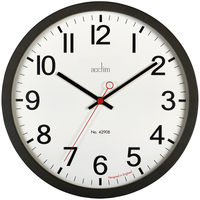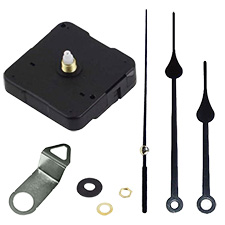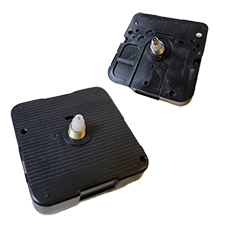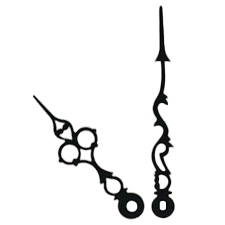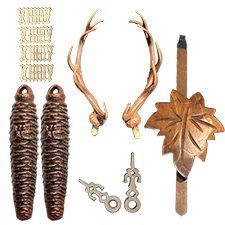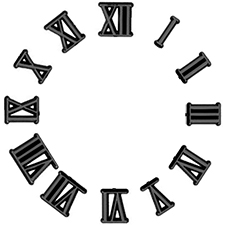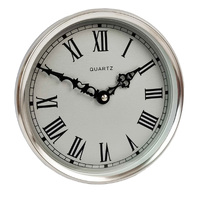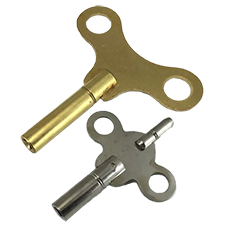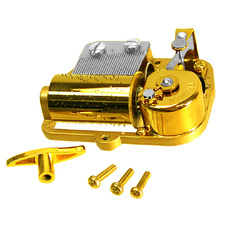Why You SHOULDN’T Hang a Clock Without Drilling
Author: Clock Shop Date Posted:1 July 2022
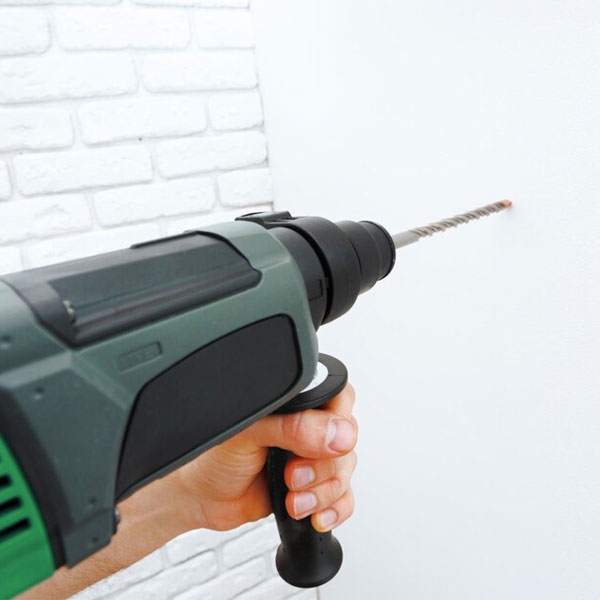
There are several reasons why you may want to hang a clock on a wall without damaging the wall by drilling a screw or hammering a nail into the wall. Reasons such as an unforgiving landlord, brick walls that are more difficult to drill into, or perhaps your home is heritage listed and the walls cannot be altered. Or maybe you just can’t part with the idea that putting a hole in your wall ruins it forever (spoiler: it doesn't).
No matter what the reason is, trying to find the magic solution may very well end in heartbreak, with a sentimental (and potentially very expensive) wall clock broken on your floor. This article is going to take you through some of the pitfalls, alternative methods for hanging wall clocks without making a hole in the wall, and why you shouldn't do it. We will then show you how to properly hang a clock on the wall so that it is safe from harm's way (the hard floor 6 feet below it).
Why You Shouldn’t Use Adhesive Hooks:
As nifty as adhesive hooks sound, they have weight limits which are often quite low. As such, most of these adhesive hooks simply won’t hold up a clock for an extended period of time. Even if you wanted to use multiple adhesive strips to effectively “add” up the total weight allowance, this doesn’t always work in practicality. Depending on where the weight is distributed on a clock, one of the strips may bear more weight than the others, ultimately exceeding that particular strip's weight allowance and putting excessive strain on it.
Another major problem with adhesive strips is that the adhesive deteriorates over time due to temperature and humidity changes. Eventually the strip becomes compromised and quite often comes completely loose from the wall.
One practical problem of adhesive hooks is the shape of the hook, or hanging point. Many clocks are required to sit flush with the wall but using a hook causes the clock to lean forward at the top which can lead to other problems causing the clock to stop. This is primarily a concern for mechanical pendulum clocks. For small battery operated wall clocks that are lightweight, it may be possible to use an adhesive hook however this is not our recommendation.
One final pitfall of adhesive hooks is that they often advertise a specialised tab to help remove them without peeling paint from the wall. However, this doesn’t always work as advertised, especially if the strip has been on the wall for a long time. And when the strip is finally removed, it still may peel a large section of paint from the wall.
Why You Shouldn’t Use Liquid Nails To Hang Your Clock:
Yes, this has actually been done! Definitely don’t use liquid nails or any other construction grade liquid adhesives. If you do, that clock is stuck there… permanently. This means that servicing, battery changes and general maintenance is virtually impossible without damage to the clock or the substrate.
Why You Should Hang Your Clock Using A Screw (Into A Stud):
Clocks come in all shapes and sizes. Many clocks are sentimental and have been passed down through many generations. Some clocks are heavy and feature glass lenses or metal bodies, whilst others need to be completely flush against a wall just to operate properly and keep accurate time, like cuckoo clocks and other clocks with pendulums. No matter what type of clock you have, the safest and smartest way to hang a clock on a wall is with a 50mm screw directly into a wall stud or nogging (a structural piece of timber that forms the fundamentals of the walls within a house).
Why 50mm and not shorter? You have to consider 3 main things:
- The thickness of the plasterboard (generally 12.5mm thick).
- How far the screw or nail sticks out of the wall (usually you need around 15-20mm).
- How far the screw or nail needs to sink into the supporting stud (usually 15-20mm to give it enough support).
So when you add up these 3 considerations you get approximately 50mm. You can use a longer screw if needed but you don’t want to go too long, probably stick to between 50-75mm.
How To Properly Hang Your Clock On A Wall:
So you have the perfect clock that you want to hang on a wall. Now you need to ensure you hang it properly so the clock sits correctly on the wall. In order to accomplish this, you want to hang your clock from a screw that is fixed into a stud, or a masonry plug if you have a concrete or brick wall. To ensure you have the correct fixings, here are a few things to consider before you start:
- Does your house have wooden or metal studs.
- Is your house made of brick or masonry.
- Are your walls made from solid timber like VJ walls.
If you have wooden studs then you can use a screw. Metal studs generally require a specific screw so it grips into the metal properly. Brick walls will need to be pre-drilled with a masonry bit then a masonry plug will need to be used in conjunction with a screw.
With everything mentioned above in mind the first step is to locate a stud. If you’re not so confident in tapping your knuckle against the wall until you think you’ve found a stud, you’re probably best to get yourself a stud locator, a small hand-held device that helps you find where the studs are in your wall.
Once you’ve located the stud you then want to drill your screw at roughly a 10 degree angle (diagram 1.) so the head of the screw or nail is higher than where it enters the wall, making sure not to make the angle too extreme or too flat. The reason why you want to have your screw at an angle is so the clock leans securely back against the wall, with zero risk of it sliding off the screw and onto that hard floor below. Note the screw pictured doesn’t have any thread on the shank where it is protruding from the wall. This is not advisable and a screw with a full thread is a better choice.

Now all that is left to do is hang your clock onto the screw and you’re all done! Make sure you hang the clock via the designated hanger or hole on the back of the clock and not another hole in the body of the clock by accident. Also ensure the clock sits flush against the wall and 12 o’clock is pointing directly up.
What to do if you don’t have a stud to screw into:
A few points to note is that sometimes your studs aren’t always in the perfect spot for your clock. There are a couple of solutions:
- You may consider a compromise and hang the clock slightly left or right of where you want it. It may also be possible to place your clock on a shelf or table, however this will largely depend on the type of clock. One option is to utilise a picture frame / plate stand and use it for your clock.
- For lightweight clocks that are not required to be wound, it is possible to use a self drilling plasterboard wall plug or another type of plasterboard fixing that leaves a screw protruding. Please note, many of the plasterboard (or drywall) anchors are for fixing something directly to the wall and require the screw to be fastened tight against the wall. This means that there is no screw protruding to hang the clock on.
- Finally, and most important for clocks that require winding, you can use a decorative timber backboard, or a concealed timber backboard (this means it would not be visible from the front as it is the same size or smaller than the back of your clock) and fix this to the wall using two or more wall anchors. Then you have a timber substrate to screw into.
When you wind your mechanical clock, the movement and additional weight could eventually damage the gyprock / drywall securing a single plasterboard wall plug and then one day out of the blue your clock will simply fall to the floor. We strongly recommend that if you don’t have a stud available to consider an alternative fixing that is appropriate for your clock.
We hope this article has helped you realise the many downsides of not using a screw to hang your clock. If you like these articles be sure to subscribe to our mailing list where you’ll be notified everytime a new blog has been posted.


